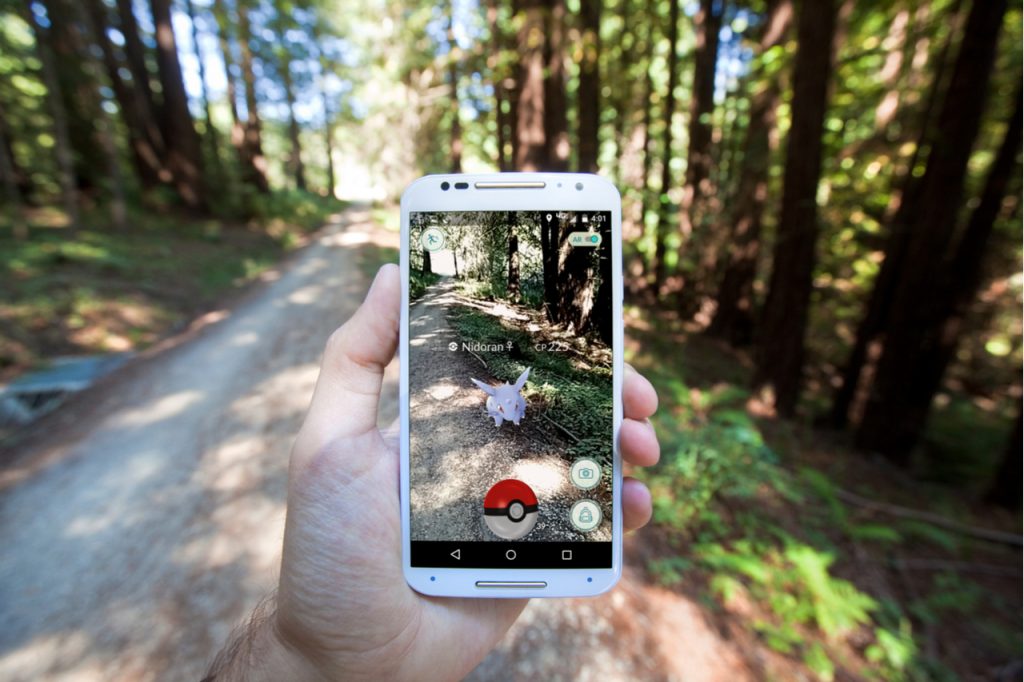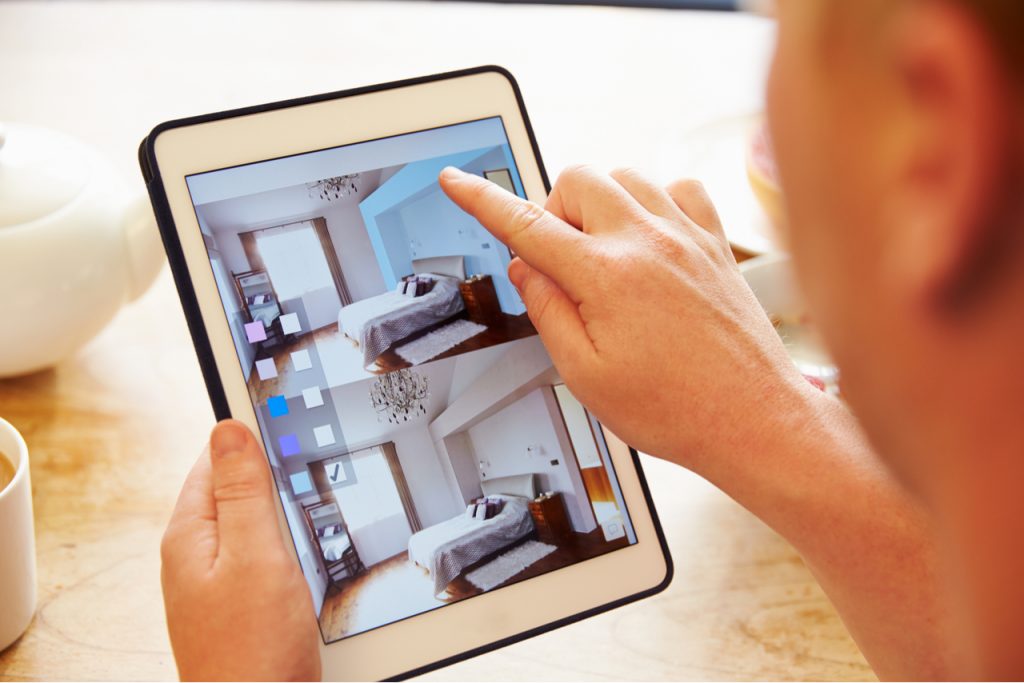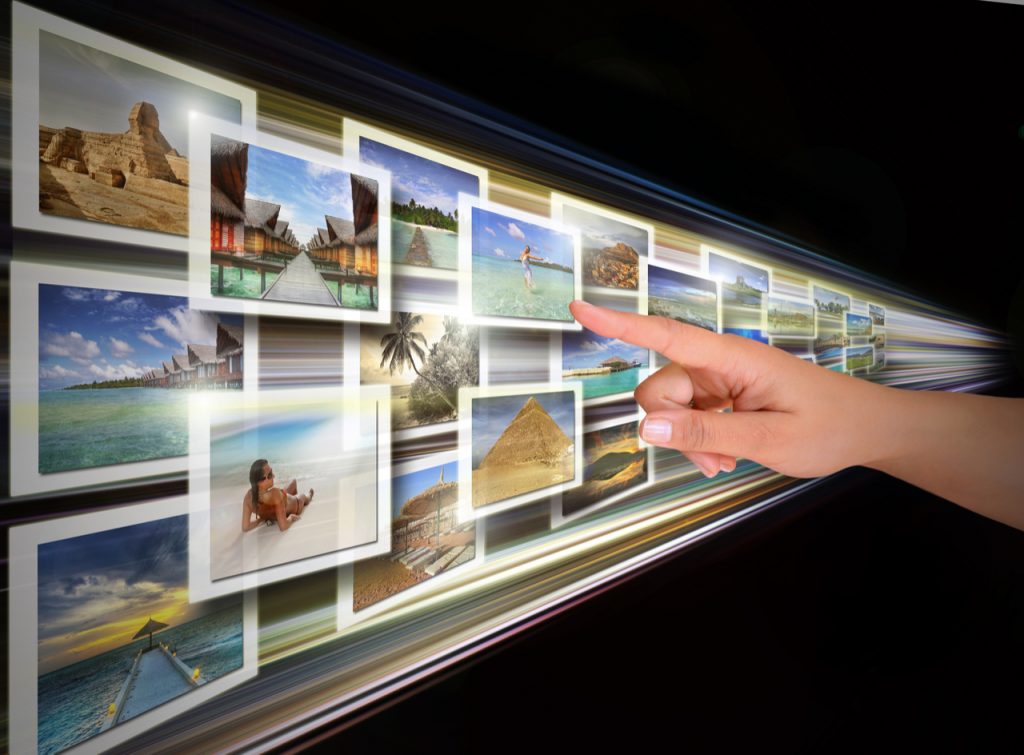Is 2018 finally the year for Augmented Reality Technology?
With the trend building in Voice Search, we have made an audio version of this article. Press play above.
Do you remember that period when every passing year was supposedly the year of mobile? This year was meant to be the year of augmented reality technology. Or at least, when augmented reality well and truly hit the mainstream. We’re over half way through the year, and I’d ask the question are we there yet? Sort of? Ish? Maybe. Not quite? 2018 has no doubt presented the perfect storm of factors to make augmented reality huge and some brands have grabbed the bull by the horns and now they’re tearing off into the distance. Others? They’re huffing and puffing, plodding along some way behind.
Popularised by Pokémon Go and SnapChat, Augmented Reality technology creates composite views of the real world – that is to say computer-generated images overlaid on top of real-life views. Pokémon Go and SnapChat’s spectacles launched two years ago now, but 2018 was pitted as the dawn of a new Augmented Reality era thanks to improved augmented reality capabilities in the latest generation of smartphones and an augmented reality technology app development arms race between Google, Facebook and Apple. As consumers become more familiar with the Augmented reality technology features built into their phones and developers push more augmented reality technology solutions into the ether, the conditions are set for an explosion.

So what does the augmented reality technology mean for brands?
The implications of augmented reality technology for brands are colossal. Consensus is that whatever a smartphone can do, AR can do better. Accessing directions, searching shop stock, finding friends in a crowd, scouring restaurant reviews, learning from ‘how-to’ product tutorials – all of these experiences can be delivered faster and with greater impact using augmented reality technology.
Augmented reality technology is already pushing boundaries in the home improvement sector. IKEA, Wayfair and Houzz’s augmented reality apps allow home improvers to visualise photo-realistic, life-size renderings of new products in the home, while US home improvement retailer Lowes uses augmented reality technology to help consumers take real-life measurements of walls or household furniture via their smartphones. Meanwhile US glasses manufacturer Warby Parker is using augmented reality technology to help consumers try on spectacles virtually, while Lacoste’s new augmented reality app helps consumers size up the perfect pair of shoes. In March this year, L’Oreal made headlines when it acquired Modiface – a development company behind a series of augmented reality technology-fuelled custom beauty recommendation apps.
And it’s not just B2C brands that are benefiting from augmented reality technology. In the states, medical professionals are now being trained using this technology. In the UK, a Soluis Group consortium secured £1m in funding from Innovate UK to develop an augmented worker system for the construction industry. Logistics and shipping company DHL is leveraging augmented reality technology to maximise efficiencies in distribution centre processes. Once you start, it’s hard to think of a single sector or industry that couldn’t be enhanced by augmented reality in some way.

So what does this mean for launches?
>As marketers sometimes we can be guilty of crowbarring an emerging technology into our brand activation. As unsexy as it sounds, we need to give due consideration to the user journey and experience before we jump into tech mode. Where are the consumers’ pain points? What processes could be made easier or smoother with a more visual technology solution?
Travel brands are a great case in point. When researching our holidays, we scour through search engines, social networks, consumer review sites, travel apps, travel comparison sites, hotel sites, flight sites, car hire sites – the list is exhaustive and that research doesn’t stop once we research our destination. So intense is this research experience, 55% of holidaymakers feel they have to review too many sources of information when planning and embarking on their holidays.
Now say you’re launching a hotel brand. How could you take some of the pain out of that holiday researcher’s experience? Augmented reality tours of the hotel’s accommodation and facilities could go some way to alleviating that holidaymaker’s planning pain. You could provide augmented reality-fuelled navigation once the guest arrives, helping them find their way around the hotel and local area with restaurant and activity recommendations and timely offers. You could add features that help guests identify local foods or provide them with translation assistance and prompts. In short, you can help eliminate the need for frantic touch-typing on their smartphones, helping them enjoy your brand and the overall holiday experience.

Conclusion
With app development so heavily facilitated by the tech giants and consumer adoption on the rise, the barriers to creating an AR solution have been whittled away. So what are brands waiting for? Much like the application of Blockchain technology, if you’re planning a launch, take a good look at your customer journey. What aspects of that journey are unnecessarily painful or slow? What could be sped up, simplified, enhanced or simply made more enjoyable with augmented reality technology? Those practical use cases won’t be hard to find and your consumers will thank you for providing a smart augmented reality solution to serve their unmet needs.
Image Credits
- Shutterstock

By Constance Meath Baker
Strategy Planner
